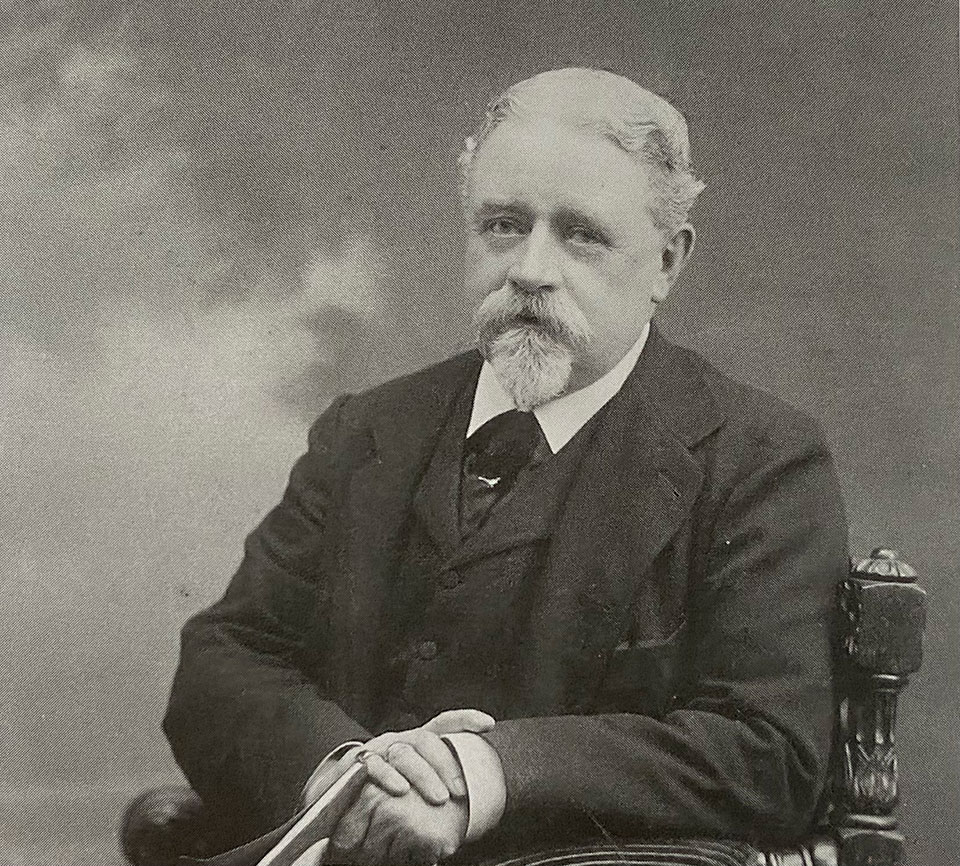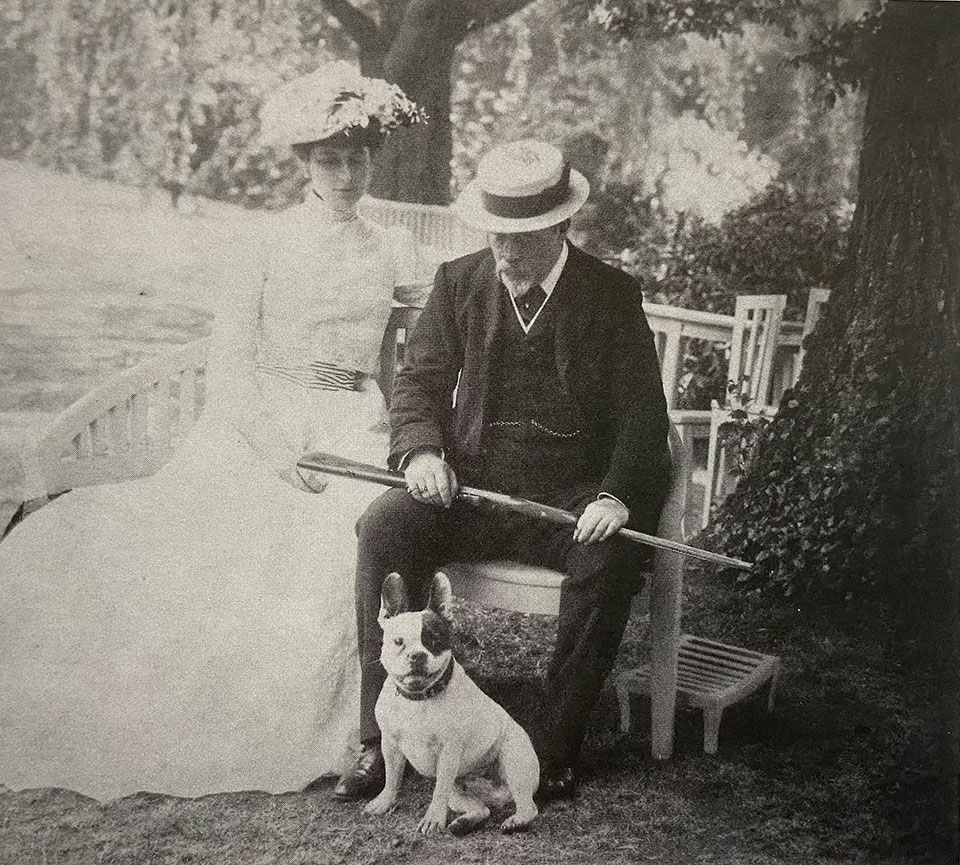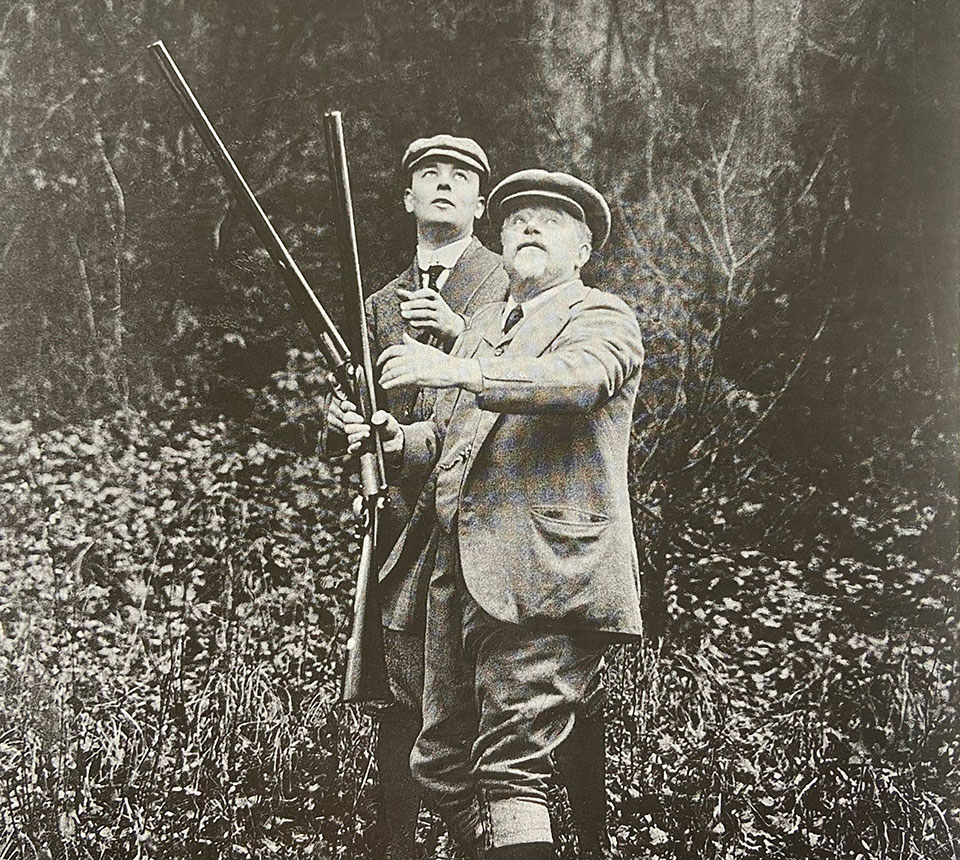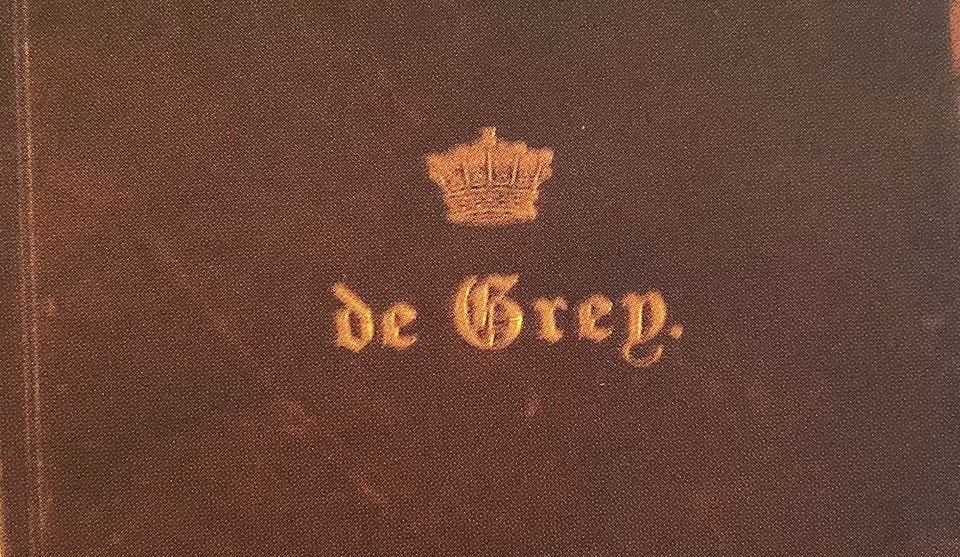While George and Olly are most famously associated with shotguns and driven game shooting, they were also both keen rifle shots. Such rifles generally fall into one of two categories: ‘Pea’ or other small-calibre rifles, normally used for rooks and ground game; and express rifles for deer. They also owned rifles by various other makers, as well as a 4-Bore Purdey double rifle, which I have already discussed in my article last year, ‘The Largest Purdey Rifle Ever Made’.
George’s first Purdey rifle was No. 6062, a double-barrelled pinfire ‘Pea’ rifle (‘Pea’ used to describe a small-bore rifle, but not a particular calibre). This was purchased third-hand in 1867, having been completed in 1861 for Timothy Hutchinson and owned by Sir St. George Gore. Despite the fact that pinfire ammunition was already being eclipsed when George bought it, they were still having the rifle serviced and buying ammunition for it until 1882, when it was last recorded as serviced. By that time, it had already been supplemented with rimfire and centrefire rook rifles, the former being Frank Wesson single-shot rifles in both .230RF and .320RF, which Purdey retailed during this period.

In July 1867, shortly after his purchase of No. 6062, George purchased Nos. 7359/60. These are slightly surprising, as they were muzzle-loading 40-bore double rifles, so already outdated. He was also loaned No. 5037 ‘for Lord Goderich’ (Olly’s title before his father was made Marquis of Ripon) at the same time, suggesting that they were for use in Amhuinnsuidhe Forest, on the Isle of Harris, which George had rented that year at a cost of £1,500 per annum. Despite their relative obsolescence, they remained in use until at least 1880, when No. 7359 was cleaned as part of George’s preparations for India. Surprisingly, Olly does not seem to have had his own deer rifle, and would not purchase his own double rifle until he was preparing to visit his father in India in 1880.
George’s next double rifle was another ‘Pea’ rifle, No. 8697, purchased second-hand in April 1873. This was noted in the stocker’s book as being one of two consecutive rifles supplied by Pryse & Redman. Unlike No. 6062, this was chambered for a centrefire cartridge, although it is only in the account ledger entry that the calibre is recorded – 360 Bore. At the same time, George purchased quantities of ammunition, loaded with a mix of either conical or round bullets. This was not serviced for nearly a decade, returning with No. 6062 in May 1882, when it was cleaned and had a new pin fitted.
In July 1879, thirteen years after he purchased his muzzle-loading rifles, George took delivery of a replacement, No. 10,375, a .450 (3¼in. B.P.E.) double rifle. This seems to have been used in a semi-finished state so as to be ready in time for the Scottish deer season that year. It came back to Purdey the following spring, when it was cleaned and had his crest engraved on the oval, but appears to have been very little used thereafter. Its only other appearance in the account was sixteen years later, in August 1896, when a new spring was fitted to the rotary-underlever. Its lack of use appears to be partly due to George spending a significant part of the 1880s overseas.
it is noted as belonging to Earl de Grey in the Dimension Book
Six months after George took delivery of No. 10,375, he purchased a .577 (2¾in. B.P.E.) rifle, No. 10,456. It is not entirely clear who this rifle was intended for, as although it appears in George’s accounts and is named to him in the Regulation Ledger, it is noted as belonging to Earl de Grey in the Dimension Book. It was the largest of the Express cartridges then offered by Purdey, and so may have been intended to be taken to India. It was resighted in May 1880 so that it would shoot to the same height as No. 10,375, which was 5in. high at all distances. It did not appear in George’s accounts again, but the Regulation Ledger notes that it ended up in the hands of the Honourable R.T. Lawley, of the 7th Hussars and later 4th Baron Wenlock. Quite when this transfer happened is unclear, unless it is connected to the second resighting of the rifle in July 1896, but it is one of the very few arms connect to the Ripons where its subsequent ownership was entered in the records.
When George went India in 1880, a separate account page was opened for him, under the heading on ‘Outfit Account’. This covered a number of guns and rifles, as well as ammunition and accessories, and represents a rare opportunity to understand the outfitting of a Viceroy of India in that period. As such, these will be covered as a discrete group in another article. The final group of rifles that Olly purchased was a succession of Frank Wesson small-bore rifles, which Purdey retailed at this time.
Olly purchased his first, A104, in February 1879. This was a ‘single pea rifle’, chambered in ‘.230 ex. Long’, one of a number sold that year to men such as Duleep Singh and Walter Winans. Their popularity was apparently relatively short with Purdey’s customers, as the majority were sold over the next two years. Although it is listed as one of a batch of five, Olly was billed an additional £1 1s 6d for importing the rifle and ammunition from New York, on top of £6 for the rifle. This rifle remained in use until at least May 1883, when it was cleaned for the last time.

In the interim, Olly had been loaned No. A121 for a week in May 1881, which was chambered for the .320 rimfire cartridge. He does not appear to have like this rifle, and two months later he purchased his second .230RF rifle, No. A184. He does not seem to have got on with that rifle either, as it was returned after only a week for full credit. This went against No. A179, another .320RF rifle, which came back for cleaning annually for the next three years, before last being seen in June 1884. The final F. Wesson rifle to appear in Olly’s accounts is No. A331 in 1887, when its shooting was regulated. This rifle was not his though, but actually belonged to Prince Duleep Singh, and there is no explanation as to why Olly would have been paying for its regulation.
Over time, Olly appears to have taken to using a rifle chambered for 6mm bulletted caps, which may have been a rifle by Guyot that appears on a couple of occasions in his accounts. While the rifle was rarely seen, Olly purchased about 1400 of these cartridges annually between 1893 and 1911. These were propelled using fulminate and relatively quiet, meaning that a bird could be shot without disturbing its neighbor. Olly’s game book suggests that, as with his pea rifles, these cartridges were used for shooting rooks. However, as such birds appear under ‘Various’ in his game book, it is hard to gain a consistent picture of how many birds he killed with his rifles.
George was an early supporter of the Rifle Volunteer movement
There is one group of rifle-related entries in Olly’s accounts that relate to an aspect of rifle-shooting not usually associated with Purdey – competitive rifle shooting. George was an early supporter of the Rifle Volunteer movement in the 1850s, and Olly was involved from a young age. Occasional references appear in the accounts of both men to a Whitworth Rifle. The first is in George’s accounts in July 1868, when Olly would have been eighteen. At that point the rifle was hired, at a cost of £1 1s, with an additional 7s 6d charged for cleaning.
Olly was a more rounded marksman than just being a game shot
Olly then appears to have purchased his own rifle, which Purdey cleaned in July 1874 and 1876. In 1884 and 1886 there are entries for supplying .400 rifle cartridges to Olly at Wimbledon, most likely for use on the Running Deer range, where he would have been competing alongside Walter Winans and his brother Louis, both famed marksmen. It is not clear which rifle this ammunition is for, as none of the Purdey rifles owned by either man were chambered for .450/.400. The final entry relating to the Wimbledon competition was in July 1887, when fifty .360 cartridges were dispatched by messenger. These were most likely used in No. 8697, which is one of only two arms owned by his father which appear in Olly’s invoices, and which Purdey were servicing annually at this time. It is not entirely clear what competition that rifle would have been suited for.

The involvement of both father and son in both competitive and game shooting with rifles is harder to quantify than their game shooting, at least when it comes to Purdey’s involvement. It is often surprising that there are not more references, as both George and Olly clearly had some interest in rifle shooting. However, Olly was less firmly a Purdey client when it came to such things, using both Holland and Rigby rifles.
Both of these rifles, together with a few others, were serviced by Purdey, and it would be interesting to know if those companies likewise serviced his Purdeys. What it does demonstrate is that Olly was a more rounded marksman than just being a game shot, but that his other feats have been overshadowed by his prowess in the field.
Dr. Nicholas Harlow is Gun Room Manager at James Purdey & Sons in London.

Published by Vintage Guns Ltd on




